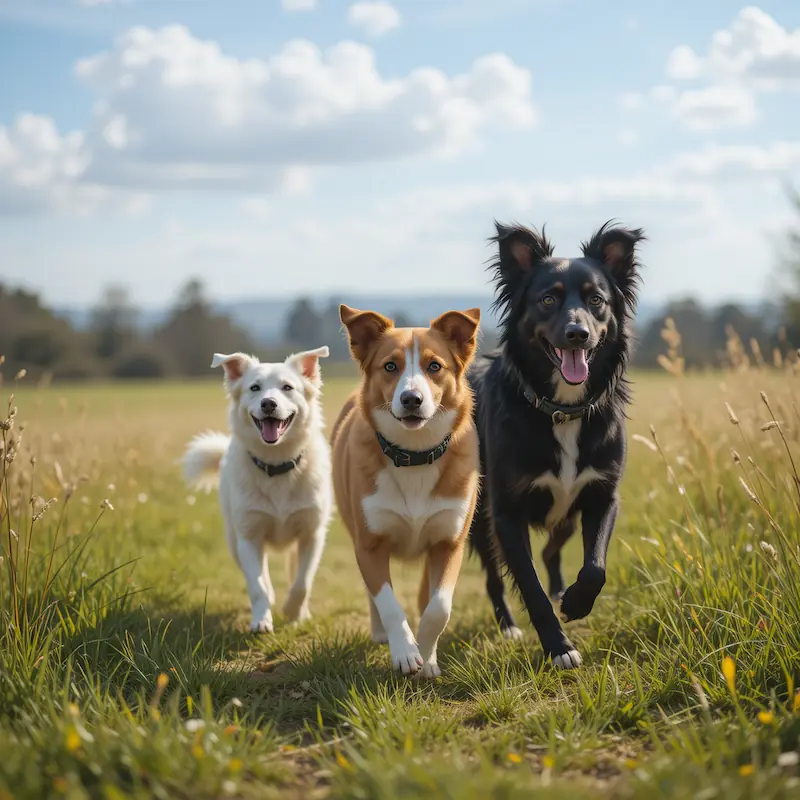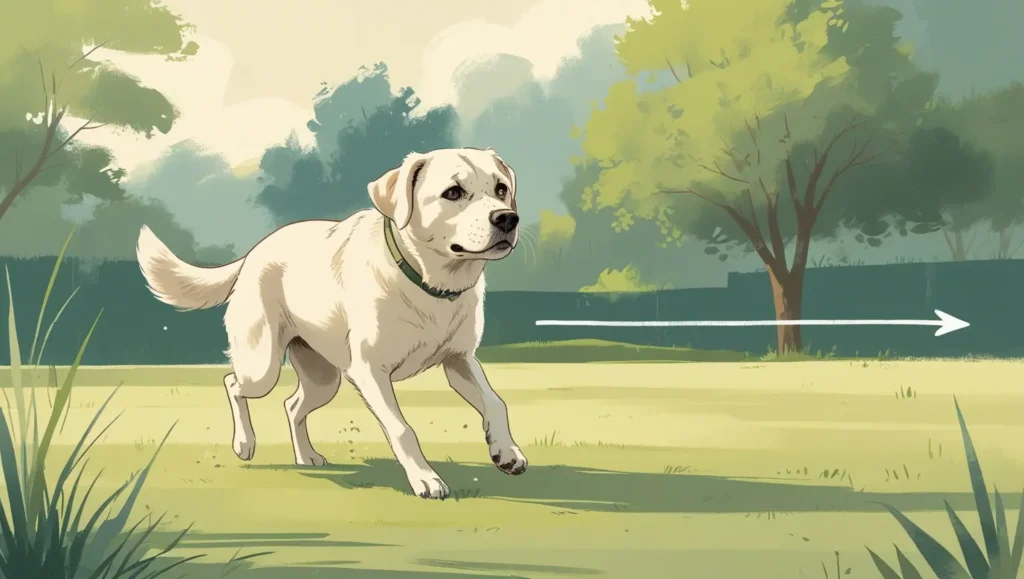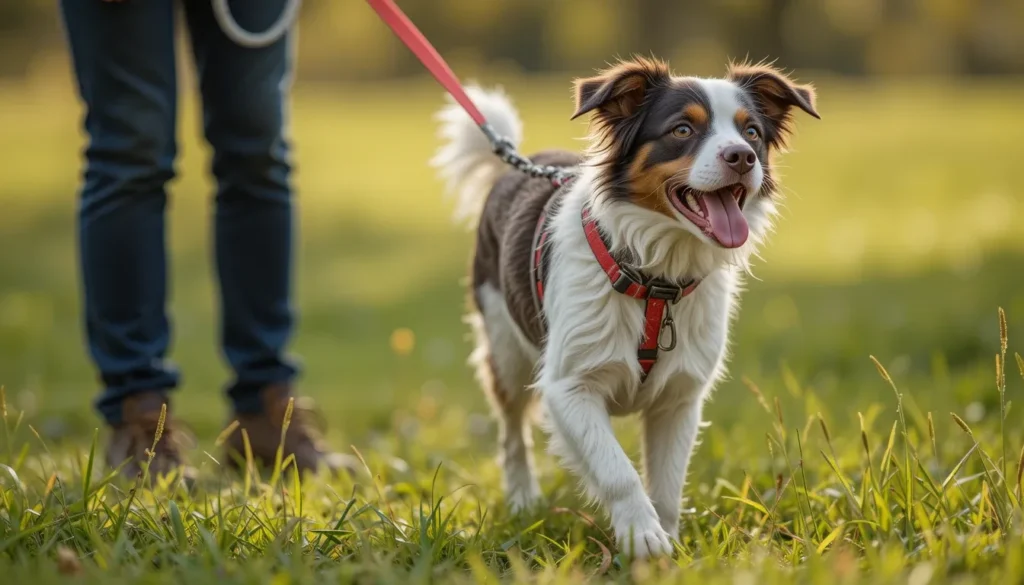Pacing is a commonly observed behavior in dogs. Understanding the signs and causes of pacing can help in managing this behavior effectively. This article will explore the various reasons behind pacing in dogs, alongside practical tips on how to address it.
Signs of Pacing in Dogs
Continuous Walking: The dog moves back and forth, in a set area like a room or hallway, without stopping or seeming to have a destination. Dr. Sara Ochoa, DVM, an experienced veterinarian at Animal Hospital of West Monroe, says, “When a dog paces, they are usually walking back and forth from one spot to another. Sometimes they will just be walking around the house without a destination in mind.”
Increased Restlessness: The dog appears anxious, agitated, or unable to settle down. Dr. Jenna Thebeau at Vetster explains restlessness as abnormal or out of the ordinary pacing and hyperactivity or hypervigilance that cannot be controlled. Examples include dogs that try to lay down to rest but get back up quickly.
Repetitive Behavior: The pacing is rhythmic or repetitive, with the dog following the same path over and over. Repetitive behavior includes spinning, tail–chasing, pacing, freezing, jumping in place, skin rippling. Other types of repetitive behaviors are shadow or light chasing, startling, avoidance, fly snapping, air licking.
Nervous Body Language: Pacing may be accompanied by other signs of anxiety, such as panting, drooling, or whining. Pacing often signals a stressed or nervous dog.
Avoidance of Eye Contact: The dog seems distracted or avoid interacting with people, even though it is still in the room. When dogs pace, it’s often a clue they’re feeling unsettled. In this situation, sometime, they avoid eye contact.
Tight Movements: The dog appears tense or stiff while pacing. Limping indicates that something is wrong with your dog.
Possible Causes of Pacing in Dogs
Anxiety or Stress: Pacing is a response to anxiety, especially in situations like being left alone (separation anxiety), loud noises (thunderstorms or fireworks), or unfamiliar environments. According to Dr. Hannah Godfrey, “Dogs can pace because they are stressed, painful, or anxious.”
Pain or Discomfort: If a dog is in pain, whether from an injury, arthritis, or an internal issue, pacing can be a sign that it is trying to find relief. Watch for other signs like limping, difficulty lying down, or sensitivity to touch. Cassie Knapp at Veterinary Emergency Group explains that “Restlessness goes along with pacing and is very similar in terms of its appearance and underlying causes too. Both pacing and restlessness can indicate that your dog is unable to lay down and get comfortable enough because of her pain.”
Boredom or Lack of Stimulation: Dogs that are not getting enough exercise or mental stimulation may pace out of boredom. This is more common in high-energy breeds or dogs that need more interactive play. To get rid of boredom, your dog paces a room or along the wall. It is an unhealthy habit. It can become obsessive and increase stress levels if performed repeatedly.
Cognitive Dysfunction Syndrome (CDS): Older dogs, like humans, can experience cognitive decline, sometimes referred to as dog dementia. It is caused by gradual and degenerative age-related changes in the brain. Pacing can be a sign of confusion or disorientation associated with CDS. For CDS, dogs lose their interest in playing and doing other recreational activities.
Excitement or Anticipation: Some dogs pace when they are anticipating something, such as going for a walk, feeding time, or playing with a favorite person or toy.
Fear or Panic: Some dogs are scared of thunderstorms, fireworks, and other loud noises. The dogs may pace as they try to find a way to escape or comfort themselves. Panic causes pacing.
Health Issues: Conditions like heart disease, gastrointestinal problems, or urinary tract infections can cause restlessness and pacing due to discomfort.
Obsessive-Compulsive Disorder (OCD): In some cases, pacing can become a compulsive behavior, especially if the dog repeats the same pattern obsessively without clear cause or relief. OCD in dogs begins around 12 to 24 months of age. PetMD describes that “The dog’s behavior intensifies over time and cannot be interrupted even with physical restraint, increases in frequency or duration, and interferes with normal functioning.”
Effective Strategies to Address Pacing in Dogs

We are discussing some effective strategies to manage pacing behavior in dogs- including creating a calming environment, establishing a consistent routine, and engaging in physical activities. Discover the importance of mental stimulation and when to seek professional help to ensure your dog’s well-being.
Creating a Calming Environment
Establishing a serene atmosphere for your dog is a pivotal step in addressing pacing behavior.
One of the first measures you can implement is designating a quiet space within your home where your dog can feel secure and relaxed. This area should be comfortable and away from high-traffic zones, outfitted with their bed, favorite toys, and perhaps a blanket that carries their scent.
Moreover, integrating calming aids into your dog’s designated area can enhance tranquility. Pheromone diffusers, which release calming scents, can help alleviate anxiety. These products are designed to create a soothing environment.
Additionally, soothing music specifically composed for dogs can serve as a gentle backdrop. This auditory stimulation has shown promise in helping anxious dogs settle down and reduce pacing.
It is also crucial to minimize exposure to stressful stimuli that may exacerbate pacing behavior. Loud noises, such as thunderstorms or fireworks, can be particularly distressing for dogs. Consider using soundproofing techniques or creating a barrier using soft furnishings to muffle these disturbances.
Furthermore, sudden movements or chaotic household activities should be limited if possible. These can trigger anxiety in sensitive dogs. By creating a stable, quiet, and anxiety-reducing environment, you can significantly lessen your dog’s pacing and enhance their overall quality of life.
Establishing a Consistent Routine
Creating a consistent routine for your dog is essential in addressing pacing behaviors. By establishing set times for important activities—such as feeding, walks, and play—you can create an environment that fosters security and reduces anxiety.
When dogs know what to expect throughout their day, they are less likely to experience the uncertainty that often leads to anxiety-induced pacing. For instance, feeding your dog at the same time each day reinforces the anticipation of meals and can help them feel more secure.
Likewise, having regular times for walks and play sessions provides physical and mental stimulation. This predictability aids in promoting a sense of stability in their lives.
Moreover, a consistent routine can help strengthen the bond between you and your dog. Engaging in activities together at set times encourages companionship and emotional connection. Dogs can also begin to learn cues that signal the next activity, further reducing their need for pacing due to confusion or anxiety.
The impact of a structured environment extends even to their sleep patterns, aiding in establishing a more restful home atmosphere.
Engaging in Physical Activities
Addressing pacing behavior in dogs requires a multifaceted approach, with physical exercise playing a pivotal role. Engaging in regular physical activities can help mitigate this behavior of highly active dogs. Activities such as long walks not only provide an opportunity for physical exertion but also stimulate mental engagement through exposure to diverse environments and scents.
Incorporating challenging play sessions into a dog’s routine is another excellent strategy for managing pacing. Activities like fetch, tug-of-war, or agility training can be particularly beneficial. These exercises require both physical skill and mental focus, which can reduce anxiety and lead to a calmer demeanor in dogs.
Additionally, offering interactive games and puzzles can stimulate a dog’s mind while also involving physical movement. This dual approach ensures that energy is released effectively, thereby reducing the likelihood of pacing episodes.
Moreover, it is important to emphasize the significance of mental stimulation that accompanies physical activity. Engaging a dog in training exercises or obedience tasks can serve as an excellent outlet for their energy while enhancing their cognitive functions.
Dogs thrive on routines; therefore, incorporating a mix of both physical and mental challenges into their daily activities can significantly improve their overall well-being. This method not only channels their energy in a positive manner but also strengthens the bond between the dog and the owner through shared experiences.
Seeking Professional Help
Pacing in dogs can often be a symptom of underlying issues that may require the expertise of a professional. If self-help strategies, such as increased exercise or consistent routines, fail to yield improvement, it may be time to consult a veterinarian.
A veterinarian can play a crucial role in identifying any medical conditions that may be prompting the pacing behavior. Common physical ailments, such as pain, allergies, or gastrointestinal issues, can sometimes manifest as restlessness or pacing.
By conducting a comprehensive examination and necessary diagnostic tests, a veterinarian can rule out these potential health concerns, ensuring that the dog’s pacing is not a cry for help stemming from an underlying, untreated medical condition.
In addition to seeking veterinary assistance, engaging a certified dog behaviorist can be beneficial in tackling pacing behavior. A behaviorist is trained to evaluate a dog’s temperament and assess their environment. They will provide tailored guidance aimed at addressing the specific pacing behaviors exhibited by a dog.
Through behavior modification techniques, a behaviorist can help owners implement strategies that promote calmness and improve the overall mental well-being of the dog. This tailored approach not only considers the dog’s individual needs but also fosters a stronger bond between the pet and its owner.
Early intervention is vital when addressing pacing in dogs. The sooner a professional can assess the behavior, the more effective the management strategies developed will be. Engaging both veterinary and behavioral expertise ensures a holistic approach to treatment. This can lead to significant improvements in the dog’s quality of life, allowing for a more relaxed and balanced demeanor. Therefore, when pacing persists, seeking professional advice is a critical step in promoting your dog’s overall well-being.




